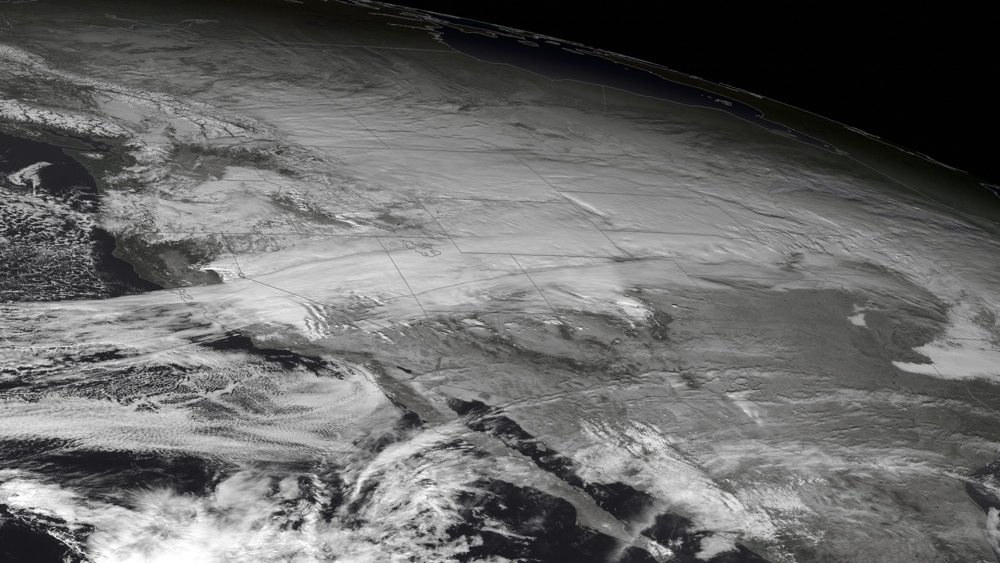
Major US Winter Storm Spotted from Space

Unlike the balmy, decidedly un-December like weather that has enveloped parts of the eastern United States, the West and Midwest have gotten a harsh blast of winter thanks to a powerful storm that blanketed a large swath of the country. The massive storm was spotted from orbit by the GOES West satellite on Dec. 3, as seen in the image above.
The storm has dumped large amounts of snow and sent bone-chilling winds rushing across affected areas. It also brought temperatures that were much colder than average. Big Hole National Park, in Montana, reported a temperature of minus 31.9 degrees Fahrenheit (minus 35.5 degrees Celsius) this morning (Dec. 5), and the National Weather Service reported snowfalls in the area from an inch to more than a foot.
Snow currently covers most of the Northern Plains, and is expected to continue through today, with the system gradually moving eastward and bringing snow and a mix of snow, ice and rain to areas from the Ohio Valley up to Albany, N.Y., according to Accuweather. Accuweather also warns that a severe ice storm could unfold from North Texas up through Kentucky, potentially causing power outages and dangerous road conditions.
Follow Andrea Thompson @AndreaTOAP, Pinterest and Google+. Follow us @livescience, Facebook & Google+.
Get the world’s most fascinating discoveries delivered straight to your inbox.

Andrea Thompson is an associate editor at Scientific American, where she covers sustainability, energy and the environment. Prior to that, she was a senior writer covering climate science at Climate Central and a reporter and editor at Live Science, where she primarily covered Earth science and the environment. She holds a graduate degree in science health and environmental reporting from New York University, as well as a bachelor of science and and masters of science in atmospheric chemistry from the Georgia Institute of Technology.
 Live Science Plus
Live Science Plus





